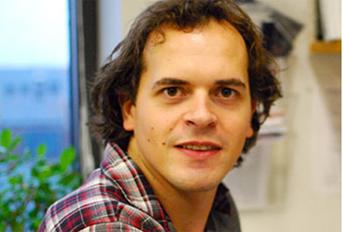Associação Portuguesa de Investigação em Cancro
Induction of a hemogenic program in mouse fibroblasts
Induction of a hemogenic program in mouse fibroblasts

The study is a first step towards generating patient-specific blood products for cell-replacement therapy.
By transferring four genes into mouse fibroblast cells, researchers at the Icahn School of Medicine at Mount Sinai have produced cells that resemble hematopoietic stem cells, which produce millions of new blood cells in the human body every day. The study, titled, "Induction of a Hemogenic Program in Mouse Fibroblasts," was published online in Cell Stem Cell on June 13. These findings provide a platform for future development of patient-specific stem/progenitor cells, and more differentiated blood products, for cell-replacement therapy. "The cells that we grew in a petri dish are identical in gene expression to those found in the mouse embryo and could eventually generate colonies of mature blood cells," said the first author of the study, Carlos Filipe Pereira, PhD, Postdoctoral Fellow at the Icahn School of Medicine.
Carlos-Filipe Pereira1,3, Betty Chang1,3,6*, Jiajing Qiu1,3,6*, Xiaohong Niu1,3, Dmitri Papatsenko1,3, Caroline E. Hendry1,3, Neil R. Clark2,3, Aya Nomura-Kitabayashi4, Jason C. Kovacic4, Avi Ma’ayan2,3, Christoph Schaniel2,3, Ihor R. Lemischka1,2,3* and Kateri Moore1,3*
1Department of Developmental and Regenerative Biology;
2Department of Pharmacology and System Therapeutics;
3Black Family Stem Cell Institute;
4Cardiovascular Research Center;
6The Graduate School of Biomedical Sciences; Icahn School of Medicine at Mount Sinai, One Gustave L. Levy Place, Box 1496, New York, NY 10029, USA.
Correspondence: [email protected]
Definitive hematopoiesis emerges during embryogenesis via an endothelial-to-hematopoietic transition. We attempted to induce this process in mouse fibroblasts by screening a panel of factors for hemogenic activity. We identified a combination of four transcription factors, Gata2, Gfi1b, cFos, and Etv6, that efficiently induces endothelial-like precursor cells, with the subsequent appearance of hematopoietic cells. The precursor cells express a human CD34 reporter, Sca1, and Prominin1 within a global endothelial transcription program. Emergent hematopoietic cells possess nascent hematopoietic stem cell gene-expression profiles and cell-surface phenotypes. After transgene silencing and reaggregation culture, the specified cells generate hematopoietic colonies in vitro. Thus, we show that a simple combination of transcription factors is sufficient to induce a complex, dynamic, and multistep developmental program in vitro. These findings provide insights into the specification of definitive hemogenesis and a platform for future development of patient-specific stem and progenitor cells, as well as more-differentiated blood products.
Cell Stem Cell
http://www.cell.com/cell-stem-cell/abstract/S1934-5909(13)00217-8




